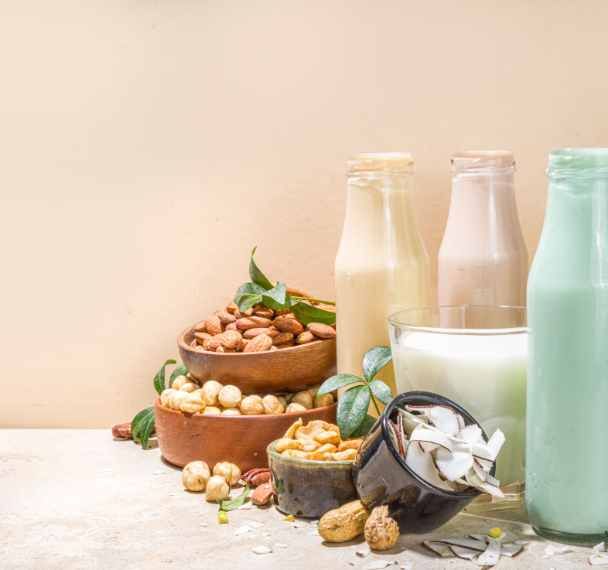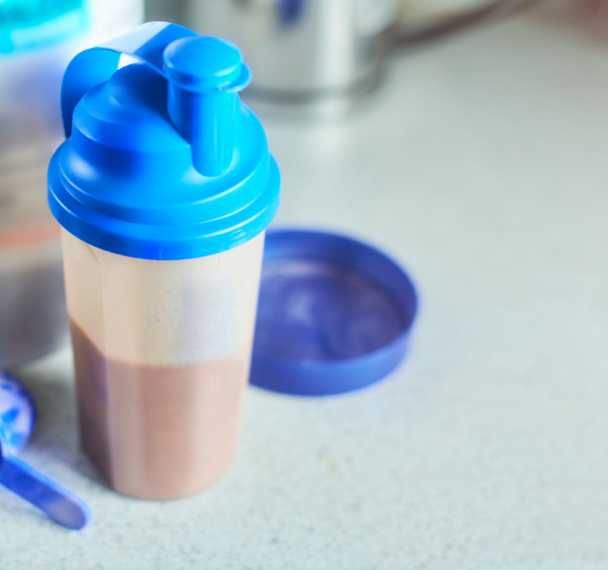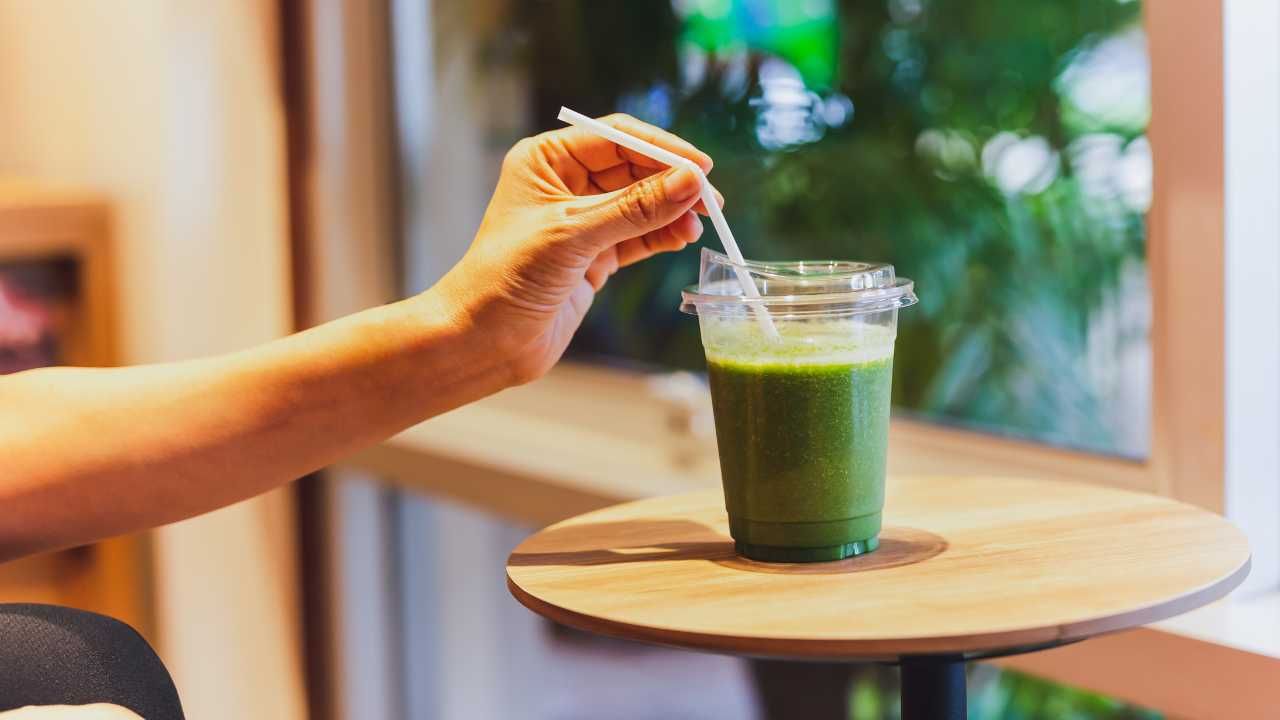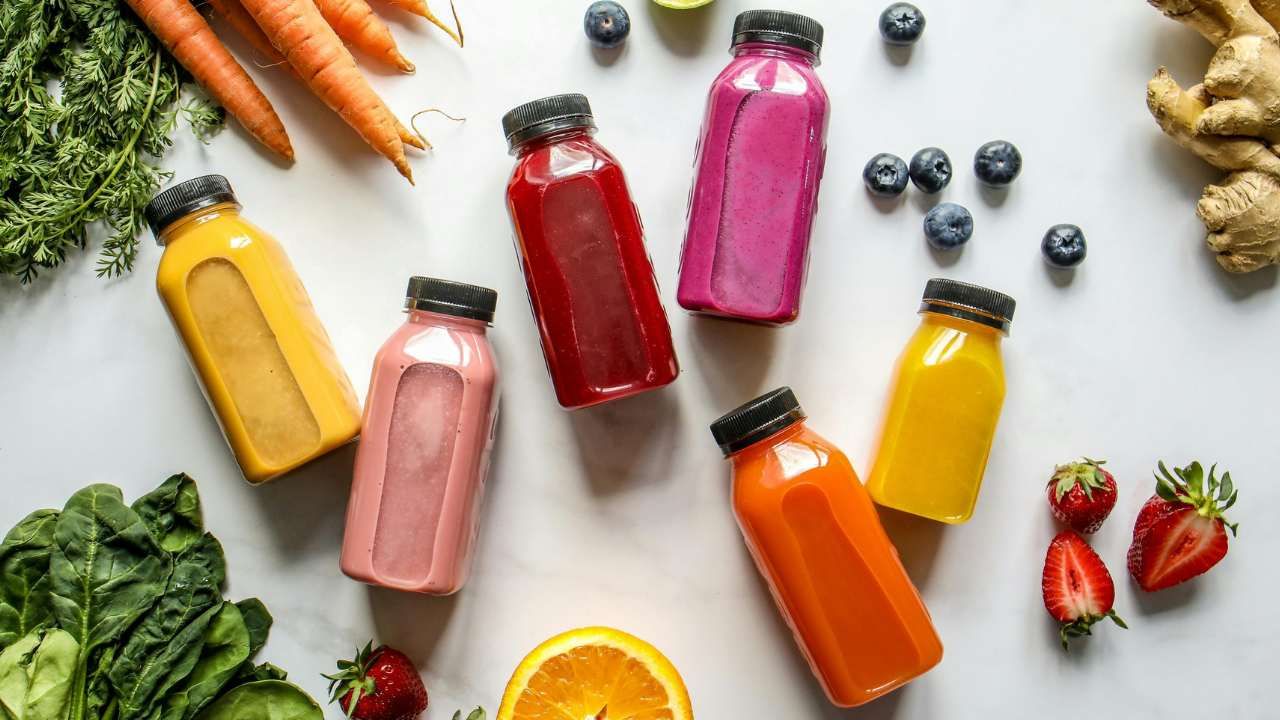The Ultimate Guide to Starting a Successful Food Business in the UK
Jun 11, 2024
Introduction
If you have a food or drink product’s idea that you would like to sell, but you're not sure where to start, this blog is for you.
As a future food and beverage start-up or side hustle, selling from a physical store, from home, a food truck, a food stall or online, we have provided you a step-by-step overview of the full process to set up and run your food business.
We have simplified the complex food legislations and compiled all the necessary information in one place. Our goal is to make it easier for you to understand the food legislation and feel confident in running your food business without feeling overwhelmed.
Just a note, we won't delve into the basics of starting a business, such as creating a business plan, registering the appropriate type of company (e.g. sole trader, limited company, partnership), or addressing taxes, business insurance, or data protection.
We have combined much more information and tips to help you navigate the key areas necessary for compliance with food legislation in our new Ebook: Launching a Food Business the Right Way. Download Here.
Step 1: Registration and authorisation

Once you have completed the essential steps of setting up your business, including market research, competitor analysis, determining your business structure (e.g., sole trader, partnership or limited company), and finalising your product, it is crucial to ensure full compliance with food legislation.
This will allow you to sell your products safely and confidently.
Food business registration
If you sell food and or drink you are by definition a food business. It is therefore essential to register with your local authority, regardless of where you operate.
This applies to all types of operations, including physical customer-facing premises, home-based businesses, mobile units or temporary premises, and online platforms such as social media or websites.
Registration is completely free and cannot be refused. It should be done at least 28 days before you start trading but if you are already trading and haven't registered yet, do it as soon as possible to comply with legal requirements.
Licence
You may also need specific licences based on your business activity, the premises, and the product you are selling.
Few examples:
🔸You may need to apply to a Premises Licence and a Personal Licence to sell alcohol from a particular venue.
🔸If you are planning to sell food on the street or in a market you will require a Street Trading Licence.
🔸You will need a Pavement or Street Display Licence to put an advertising sign on the road or pavement.
Step 2: Food safety procedures

Food safety is about complying with food hygiene and food standards to make sure that the food you serve is safe to eat.
If you are producing your product at home, in a store or any other premises, it is essential to establish your food safety procedures.
However, if you work with a co-manufacturer or co-packer, they will handle the manufacturing food safety procedures. In this case, you may focus on other aspects of food safety, such as storage and transport.
Good Food hygiene
When setting up a food business at home, in a store or any other premises, you will need to implement practices that prevent food poisoning and guarantee the safety of the food you sell.
The first aspect to consider is to maintain high standards of personal hygiene, which includes handwashing protocol and appropriate clothing.
The next aspect to consider is how to store ingredients and finished products properly in order to protect them from harmful bacteria, chemicals, and physical contamination.
Storage should be done by temperature (ambient, fridge, freezer) in separate containers that are properly labelled with information such as the date of making, expiring date, and allergens.
Then, every aspect of your food and beverage production process must be carefully considered. This includes handling different types of ingredients, maintaining proper cooking and storage temperatures, establishing a cleaning schedule and procedure, and optimising production workflow.
In terms of production process there are 4Cs to remember:
🔸Cleaning: Clean and disinfect food areas and equipment with appropriate products.
🔸Cooking: How to cook food in your business to kill harmful bacteria and prevent food poisoning.
🔸Chilling: How to chill, freeze and defrost food safely in your business.
🔸Cross-contamination: Guidance on how to prevent harmful bacteria cross-contamination in your product.
Food safety management procedures (HACCP)
You must develop your own food safety procedures based on the principles of HACCP (Hazard Analysis and Critical Control Points). HACCP is a system that examines the activities within your business, identifies potential risks to food safety, and devises strategies to mitigate them.
The first step is to help you identify potential food hazards for your product, known as critical control points. These hazards can include microbiological risks such as harmful bacteria, chemical risks such as detergent contamination, or physical risks such as presence of plastic pieces in your product.
The second step is to assist you in developing food safety procedures, documentation, and regular record-keeping. This will ensure that you have taken all necessary measures to prevent food hazards and have established a protocol to address them if they happen.
By implementing these measures, you can ensure that the food you produce and sell is safe for consumption.
One of the most important aspects of HACCP, and crucial for your future food inspection, is maintaining up-to-date documents and records. For example, temperature logs for fridge and freezer, cooking temperatures, and cleaning procedures.
Also, for specific small food businesses, such as caterers or retailers, there are simpler HACCP procedures called Safer food, better business (SFBB) packs.
Food preparation area(s)
You must always keep your food preparation area(s) clean and well-maintained. This is essential to prevent contamination and pest infestation.
Everything in your food preparation area(s) should be easy to clean and disinfect, including:
🔸Equipment
🔸Surfaces (including surfaces of equipment)
🔸Sinks
🔸Floor
🔸Walls
🔸Doors and Windows: if they open to the outside, they must be fitted with insect-proof screens
🔸Ceiling: have no condensation, mould, or flaking paint or plaster.
Cleaning schedules for every item listed above will be planned as part of your HACCP process.
Therefore, it is advisable to choose equipment and materials that are easy to clean and facilitate cleaning around them.
For instance, opt for items made of stainless steel and containers with wheels that can be easily moved. Additionally, ensure the floors are smooth and washable.
The first area to consider is washbasins. They should be dedicated areas for washing hands only, equipped with hot and cold running water, as well as materials for hygienic hand cleaning and drying (such as paper towels).
Additionally, a separate sink must be provided for washing food and cleaning equipment. This sink should have access to hot and cold water and meet drinking water standards.
Manage Allergens
To ensure the safety of your customers with food allergies, it is a legal requirement to accurately provide allergen information and effectively handle and manage food allergens in the designated food preparation areas.
There are 14 food allergens that have been chosen because they are the most common and dangerous:
If your product is sold in a retailer, the allergen information must be clearly displayed on the product label, specifically in the ingredient list and highlighted in bold.
If your product is sold online, the allergen information needs to be provided directly on the product page of the website, social media store, catalogue, or menu.
Additionally, the allergen details should also be included with the delivered product (e.g. using allergen sticker).
If one of your products does not contain allergens but you are working in an environment that contains allergens, there are steps you can follow to avoid cross-contamination, such as:
🔸Store ingredients and finished products that contain allergens separately, using appropriate allergen labels.
🔸Use separate utensils, equipment, and a food preparation area (e.g. a dedicated bench top) when handling ingredients that contain allergens. Implement a colour coding system to facilitate this process.
🔸Ensure that all utensils and equipment are thoroughly cleaned before each use.
Remember to regularly wash hands thoroughly.
Food waste management
As a food business you have a legal obligation to dispose of waste in a secure manner without causing any contamination.
This includes avoiding any contact between waste and surfaces used for food preparation, as well as preventing the attraction of pests.
To ensure compliance, remove food waste and rubbish from your premises as quickly as possible to prevent pest infestations.
Dispose of all your food waste in designated bins rather than being poured down the sink. Use commercial sink strainers, grease traps, or grease removal units to prevent small food particles and FOG (fat, oil, and grease) from entering the sewer system.
If you don’t do so, you may end up with unpleasant smells, vermin issues, water pollution, harm to wildlife, and blockages that may cause flooding. On top of that, if you dispose of FOG carelessly, you can face legal consequences for your business.
Contact your local authority to check the correct way to dispose of food business waste responsibly.
Finally, do not send food waste for use as animal feed or pet food. There are certain conditions where you can send food waste for use in farm animal feed, check out the government website.
This is done to protect animal health and ultimately the food chain.
If your food business generates waste cooking oil, it cannot be disposed of with your business food waste or taken to standard recycling centres.
Organise a separated business waste cooking oil collection by an authorised collector who will transport it to an approved facility for recovery or disposal.
Food deliveries
When selling and delivering food without face-to-face contact with the consumer (e.g. online via your own website or an external site like Deliveroo, social media, phone call), there are two main aspects to consider: the integrity of the product and temperature control.
Regardless of the delivery option you choose (e.g. third-party delivery service or your own vehicle), the first step is to select food-grade packaging or containers that are both sturdy enough to protect your product and prevent contamination (e.g. dirt, dust, bacteria).
The next important consideration is ensuring that chilled and frozen foods remain at the correct temperature throughout the entire delivery process until they reach their destination.
This can be achieved through the use of cool bags, insulated boxes, or refrigerated/freezer vans. If you use your own vehicle, you may need to periodically check and monitor the food temperatures.
For those selling meat products, it is essential to keep raw and ready-to-eat foods separate during transportation.
Hygiene inspection
When you register as a food business with your local authority, the local food safety team will be automatically notified. The inspection(s) will be conducted by authorised officers, usually a Food Safety Officer or an Environmental Health Officer from your local council.
They may reach out to you to schedule your first inspection, or they may arrive at your premises without prior notice. In some cases, it may take several months before your business receives its initial inspection.
During the inspection, the officer will review your premises to ensure compliance with food law and assess how food is handled hygienically and will also evaluate your food safety management system. They will basically check every aspect we mentioned in this chapter.
They will then assign you a hygiene rating ranging from 5 (very good) to 0 (urgent improvement required). The officer will provide guidance, feedback, and suggest corrective actions to help you prepare for the next inspection.
Product withdrawals and recalls and Traceability
When you have concerns about a potential issue with the safety, quality, or integrity of your food product, it is crucial to take immediate action to protect consumers.
Food incidents can be caused by harmful bacteria like E.Coli and Salmonella, chemicals such as detergent or rat poison, environmental pollution incidents like fires or oil spills, or physical contaminants like glass, plastic, or metal pieces.
These incidents can occur at any point in the supply chain, from the ingredients you sourced to the production and distribution of your product.
If a food incident occurs, your product must be removed from the supply chain and sales channels. This can be done either by withdrawing the product (if it hasn’t reached consumers) or recalling it (if it has reached consumers).
In the case of a recall, consumers need to be informed to return or dispose of the unsafe product. Report the incident to the FSA incidents team. A recall notice may need to be issued by them.
As a food business, you need to have a robust traceability system in place. This system will facilitate efficient and accurate withdrawals and recalls, as well as identify the source of any issues, enabling the communication of relevant information throughout the supply chain.
To ensure proper traceability, you need to maintain records that include the following information:

Keep all your records up-to-date and readily available for hygiene inspections at all times.
Training
As food safety can be overwhelming, there are several inexpensive food safety and hygiene training programs to help you, like the Chartered Institute of Environmental Health.
The Food Standards Agency (FSA) offers training on food allergens through their website and also provides a Root Cause Analysis Course.
Keep records of all the training completed by you and your staff. This will allow you to demonstrate your commitment to food safety and hygiene to authorised officers when they visit your premises during hygiene inspections.
We have combined much more information and tips to help you navigate the key areas necessary for compliance with food legislation in our new Ebook: Launching a Food Business the Right Way. Download Here.
Step 3: Product Durability
Shelf-life
Shelf life, also known as product life, is the length of time during which your food product remains safe and suitable for consumption when stored as instructed and with the packaging intact.
It is important to understand the two types of dates that can be applied to your product and determine which one should be used. This not only ensures the safety of your food product but also helps to reduce food waste.

"Once open, use within x days" can be applicable to both "use-by" and "best before" date products. Once a product has been opened, its shelf life significantly decreases, and it must be stored as instructed, often requiring refrigeration.
For instance, sterilised sealed jars of cooking sauces, which can be safely stored at room temperature, may pose a food safety risk once opened.
To maximise the product life, provide clear guidance on proper storage. For example, “At home store in the fridge below 5ºC”, “Suitable for home freezing”.
A lot of factors can impact the shelf life of your product, including food hygiene, water activity, pH, heat treatment, and packaging. Therefore, conduct testing for both organoleptic quality and food safety.
Since assessing the organoleptic qualities of food requires consuming it over time, perform microbiological testing of the food to ensure its safety on the designated tasting days.
Some products, such as fresh, whole, and unpeeled fruits and vegetables, alcoholic drinks, vinegar, cooking salt, sugar or chewing gums, do not require a "best before" or "use by" date. However, it is important to include a lot number.
Packaging and Food labelling
Labelling is regulated to provide consumers with accurate information to make confident and informed food choices. There are 13 compulsory pieces of information that should be added to your food labelling:


Add the same level of information online to consumers before they make a purchase.
If you deliver food orders, it is important to choose appropriate food-grade packaging. This might include packaging materials that are resistant to liquid or fat to prevent leaks or being soaked through.
Without this type of packaging, there is a risk of chemical contaminants or germs transferring onto the food. Additionally, it is crucial to have well-fitting lids or closures to minimise any risks related to hygiene or spillage.
Suppliers
Use a reputable supplier to ensure the safety of the products you purchase. When receiving food deliveries, make sure to check the following:
🔸The temperature of the chilled and frozen products
🔸The temperature of the chilled or frozen delivery vehicle
🔸The integrity of the packaging
🔸The accuracy of the order
🔸The receipt of all necessary documents (e.g. invoice, specifications, SDS)
If you have concerns about the safety or quality of the delivered food, refuse the delivery and contact your supplier.
Co-manufacturer/co-packer
If you can't manufacture your product internally you will need to find a co-packer or a co-manufacturer. Each of them will have their own ways of working.
🔸Some will ask you to provide and ship ingredients and packaging, while others will handle everything for you.
🔸Some will assist you with food labels, while others will require you to handle the labelling process.
🔸They will all have minimum order quantities (MOQs). They will request upfront payment for this quantity, so finding a supplier with smaller MOQs is crucial.
🔸The price per unit will vary based on the quantity of products you order. Generally, larger orders result in lower prices.
🔸Some have the capability to store and ship your products directly to your home or your retailers, while others will expect you to manage the supply chain, storage, and shipping.
🔸It is essential to conduct one or multiple test runs to ensure the smooth scaling-up of your recipe. Some may charge a supplement for these tests.
🔸Keep in mind that co-manufacturer and co-packer are usually busy, so they might have a lead time of several months before they can produce your product on their production line.
Conclusion
Setting up and running a food business is a complex task that requires attention to detail, particularly when it comes to food safety.
In this blog post, we aimed to simplify the food legislation and provide you with the necessary information to empower you, prevent you from feeling swamped by the legislations, and start running your food business with confidence.
While we do our best to provide comprehensive guidance, we always recommend you to do your due diligence and reach out to your local authorities or experts, like us, if you need further assistance.
We can also help you in the creation or improvement of your food and beverage product. Contact us if you want more information.
We have combined much more information and tips to help you navigate the key areas necessary for compliance with food legislation in our new Ebook: Launching a Food Business the Right Way. Download Here.
Link to related blogs you may enjoy
🔶Formulation Secrets: 6 Steps to Craft Winning Flavours for Your Products
🔶10 Tips to Elevate Your Tastings & Drive Successful Product Development
🔶 The Ultimate Guide to Nutrition and Health Claims for Small Food and Beverage Businesses
References
British Government, Register a Food Business, https://register.food.gov.uk/new
FSA, Starting a food business from your home, https://www.food.gov.uk/business-guidance/starting-a-food-business-from-your-home
FSA, Find a food safety team, https://www.food.gov.uk/contact/consumers/find-details/contact-a-local-food-safety-team
FSA, getting ready to start your food business, https://www.food.gov.uk/business-guidance/getting-ready-to-start-your-food-business
FSA, Starting your food business safely, https://www.food.gov.uk/business-guidance/starting-your-food-business-safely
British Government, Find a licence, https://www.gov.uk/find-licences
FSA, Managing food safety, https://www.food.gov.uk/business-guidance/managing-food-safety
FSA, Food hygiene for your business, https://www.food.gov.uk/business-guidance/food-hygiene-for-your-business
FSA, Cleaning effectively in your business, https://www.food.gov.uk/business-guidance/cleaning-effectively-in-your-business
FSA, Chilling food correctly in your business, https://www.food.gov.uk/business-guidance/chilling-food-correctly-in-your-business
FSA, Cooking safely in your business, https://www.food.gov.uk/business-guidance/cooking-safely-in-your-business
FSA, Avoiding cross-contamination in your food business, https://www.food.gov.uk/business-guidance/avoiding-cross-contamination-in-your-food-business
FSA, Hazard Analysis and Critical Control Point (HACCP), https://www.food.gov.uk/business-guidance/hazard-analysis-and-critical-control-point-haccp
FSA, Safer food, better business (SFBB), https://www.food.gov.uk/business-guidance/safer-food-better-business-sfbb
FSA, Setting up your food business premises, https://www.food.gov.uk/business-guidance/setting-up-your-food-business-premises
FSA, Allergen guidance for food businesses, https://www.food.gov.uk/business-guidance/allergen-guidance-for-food-businesses
British Government, How food businesses must dispose of food and former foodstuffs, https://www.gov.uk/guidance/how-food-businesses-must-dispose-of-food-and-former-foodstuffs
FSA, Food and cooking oil waste, https://www.food.gov.uk/business-guidance/food-and-cooking-oil-waste#waste-cooking-oil-from-catering-premises
FSA, Selling food for delivery, https://www.food.gov.uk/business-guidance/selling-food-for-delivery
FSA, Preparing for your first food hygiene inspection, https://www.food.gov.uk/business-guidance/preparing-for-your-first-food-hygiene-inspection
FSA, Food incidents, product withdrawals and recalls, https://www.food.gov.uk/business-guidance/food-incidents-product-withdrawals-and-recalls#withdrawals-and-recalls-guidance
FSA, Online food safety training, https://www.food.gov.uk/business-guidance/online-food-safety-training
CIEH, Food safety training, https://www.cieh.org/training-and-courses/work-based-training/food-safety/
FSA, Best before and use-by dates for consumers, https://www.food.gov.uk/safety-hygiene/best-before-and-use-by-dates
Wrap, Food date labelling and storage advice, https://www.wrap.ngo/taking-action/food-drink/actions/date-labelling









